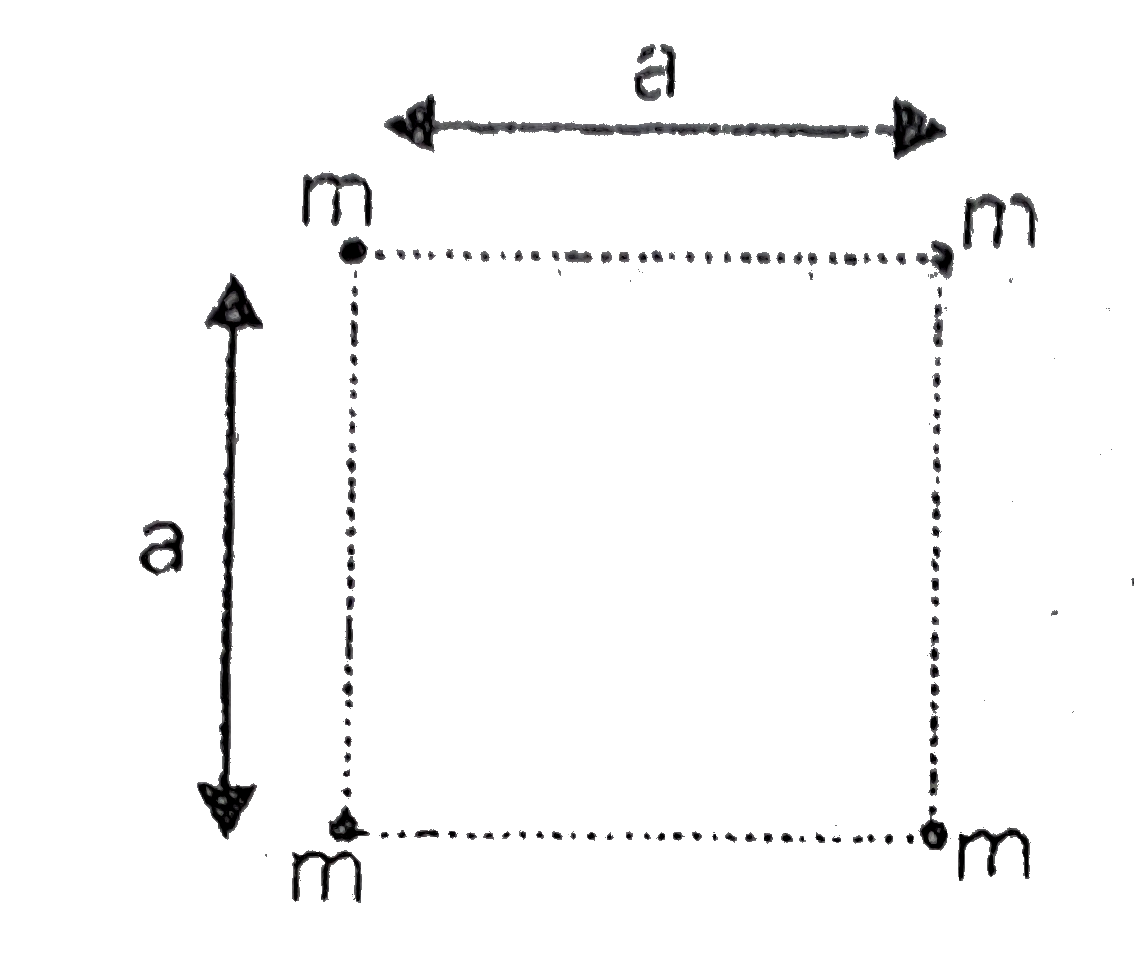n balls each of mass m impinge elastically each second on a surface with velocity u. The average force experienced by the surface will be
mn u
2 mn u
4mn u
mnu/2
The correct Answer is:B
To find the average force experienced by the surface when n balls, each of mass m, impinge elastically each second with a velocity u, we can follow these steps:
1. Understand the Momentum Change for One Ball:
- When a ball of mass m strikes the surface with a velocity u, it comes to a stop (assuming an elastic collision with the surface). The change in momentum (Δp) for one ball is given by:
Δp=Final Momentum−Initial Momentum
Since the final momentum is 0 (the ball stops) and the initial momentum is mu, we have:
Δp=0−mu=−mu
- However, when the ball rebounds elastically, it will have the same speed u in the opposite direction. Thus, the total change in momentum for one ball is:
Δp=mu−(−mu)=mu+mu=2mu
2. Calculate the Total Change in Momentum for n Balls:
- If n balls strike the surface each second, the total change in momentum for n balls in one second is:
Δptotal=n×Δp=n×2mu=2nmu
3. Determine the Average Force:
- The average force (Faverage) experienced by the surface can be calculated using the formula:
Faverage=ΔptotalΔt
- Here, Δt=1 second (since the balls are hitting the surface each second). Therefore:
Faverage=2nmu1=2nmu
4. Final Answer:
- The average force experienced by the surface is:
Faverage=2nmu
- When a ball of mass m strikes the surface with a velocity u, it comes to a stop (assuming an elastic collision with the surface). The change in momentum (Δp) for one ball is given by:
Δp=Final Momentum−Initial Momentum
Since the final momentum is 0 (the ball stops) and the initial momentum is mu, we have:
Δp=0−mu=−mu
- However, when the ball rebounds elastically, it will have the same speed u in the opposite direction. Thus, the total change in momentum for one ball is:
Δp=mu−(−mu)=mu+mu=2mu
- If n balls strike the surface each second, the total change in momentum for n balls in one second is:
Δptotal=n×Δp=n×2mu=2nmu
- The average force (Faverage) experienced by the surface can be calculated using the formula:
Faverage=ΔptotalΔt
- Here, Δt=1 second (since the balls are hitting the surface each second). Therefore:
Faverage=2nmu1=2nmu
- The average force experienced by the surface is:
Faverage=2nmu
Topper's Solved these Questions
- NEWTON'S LAWS OF MOTION 1BOOK - CENGAGE PHYSICS ENGLISHCHAPTER - NEWTON'S LAWS OF MOTION 1EXERCISE - Multiple Correct
11 Videos
- NEWTON'S LAWS OF MOTION 1BOOK - CENGAGE PHYSICS ENGLISHCHAPTER - NEWTON'S LAWS OF MOTION 1EXERCISE - Assertion-reasoning
15 Videos
- NEWTON'S LAWS OF MOTION 1BOOK - CENGAGE PHYSICS ENGLISHCHAPTER - NEWTON'S LAWS OF MOTION 1EXERCISE - Subjective
15 Videos
- MISCELLANEOUS VOLUME 2BOOK - CENGAGE PHYSICS ENGLISHCHAPTER - MISCELLANEOUS VOLUME 2EXERCISE - INTEGER_TYPE
10 Videos
- NEWTON'S LAWS OF MOTION 2BOOK - CENGAGE PHYSICS ENGLISHCHAPTER - NEWTON'S LAWS OF MOTION 2EXERCISE - Integer type
1 Video
Similar Questions
A gun fires N bullets per second, each of mass m with velocity v. The force exerted by the bullets on the gun is :
View SolutionA ball weighing 10g hits a hard surface vertically with a speed of 5m/s and rebounds with the same speed The ball remains in contact with the surface speed The ball remains in contact with the surface for 0.01s The average force exerted by the surface on the ball is .
View Solution10,000 small balls, each weighing 1 gm , strike one square cm of area per second with a velocity 100 m/s in a normal direction and rebound with the same velocity. The value of pressure on the surface will be
View SolutionA ball of mass m is dropped onto a floor from a certain height. The collision is perfectly elastic and the ball rebounds to the same height and again falls. Find the average force exerted by the ball on the floor during a long time interval.
View SolutionA ball of mass 2m impinges directly on a ball of mass m, which is at rest. If the velocity with which the larger ball impringes be equal to the velocity of the smaller mass after impact then the coefficient of restitution :-
View SolutionFour point masses each of mass 'm' are placed on the corner of square of side 'a' Calculate magnitude of gravitational force experienced each particle
 .
.
View SolutionA spherical ball of mass 10−6 kg hits a wall 1000 times per second normally with a velocity of 1000 m/s and rebounds with same velocity along the initial direction. The force experienced by the wall is
View SolutionA machine gun fires a steady stream of bullets at the rate of n per minute into a stationary target in which the bullets get embedded. If each bullet has a mass m and arrives at the target with a velocity v, the average force on the target is
View SolutionA super-ball of mass m is to bounce elastically back and forth between two rigid walls at a distance d from each other. Neglecting gravity and assuming the velocity of super-ball to be v0 horizontally, the average force being exerted by the super-ball on each wall is
View SolutionTwo equal spheres B and C, each of mass m, are in contact on a smooth horizontal table. A third sphere A of same size as that of B or C but mass m/2 impinges symmetrically on them with a velocity u and is itself brought to rest.

Find the velocity acquired by each of the spheres B and C after collision.
View Solution
